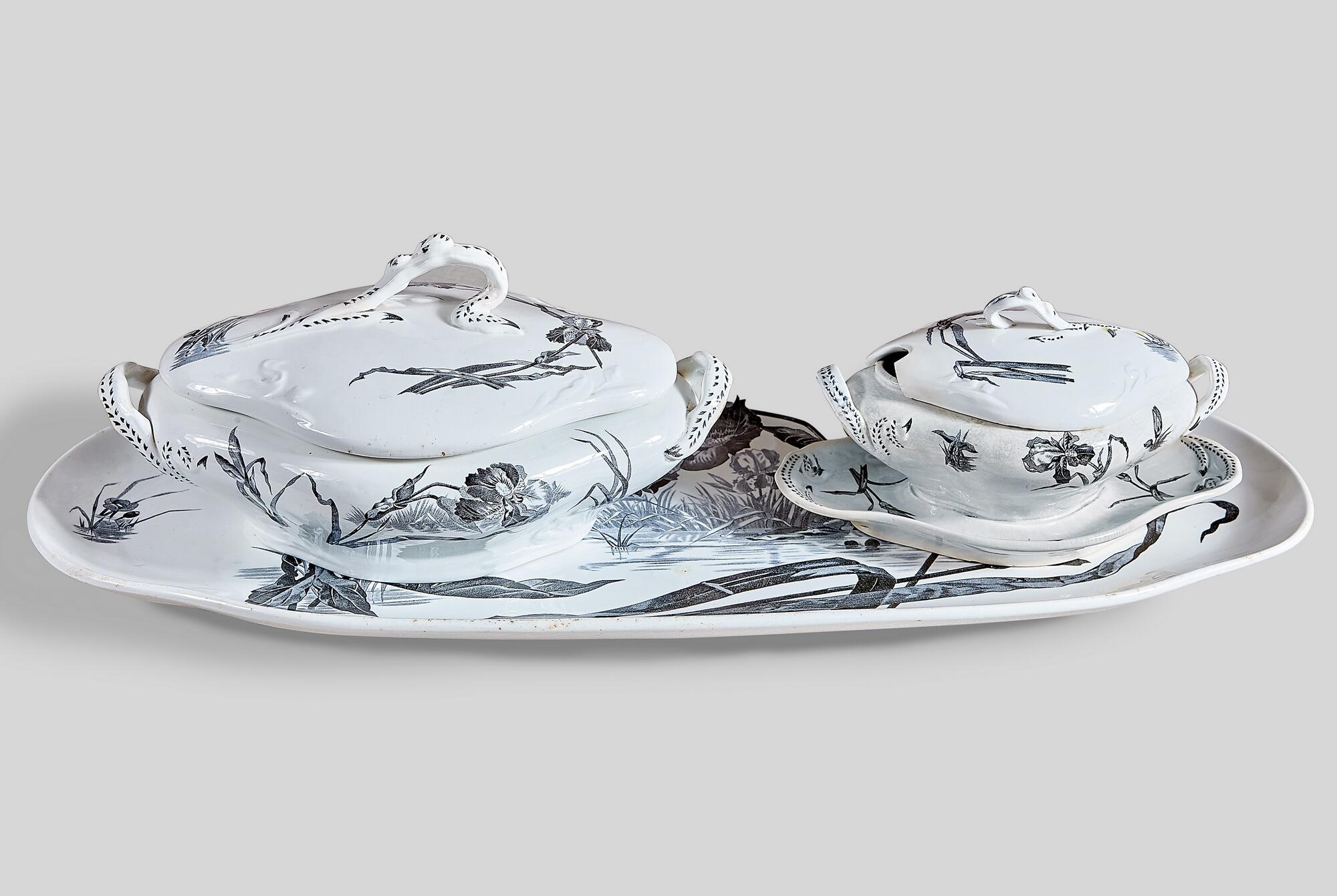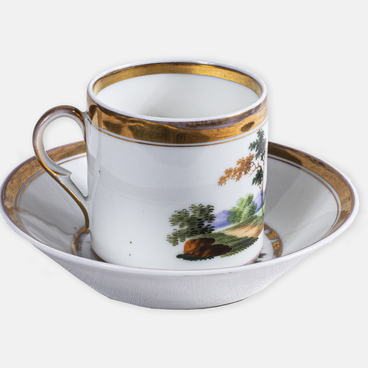The faience dinnerware set with monochrome decoration was produced at the Kuznetsov Porcelain Factory in Riga. This enterprise was one of the eight ceramics factories of the Kuznetsov Partnership.
Matvey Kuznetsov and his sons were outstanding entrepreneurs. They made sure to adopt the latest technological innovations and closely followed all the trends in European porcelain production. For example, they started making thick-walled cups and using the decal technique to transfer images onto their products.
From their travels to Europe, the Kuznetsovs often brought samples of brand-new products. Based on such models, they quickly mastered the production of new designs wishing to please the tastes of buyers of different income levels.
The dinnerware set from the museum’s collection was produced at the turn of the 20th century in the Art Nouveau style. Its stylistic features include the lack of symmetry and well-defined corners, and a preference for smooth, flowing lines.
The fanciful curved lines became dominant in the art of the early 20th century. Art Nouveau designers strove to create a uniform look in interior décor. It is no wonder that all household articles, including furniture, fabrics, lighting fixtures, and dinnerware, were designed in that fashionable style.
The shapes of the set’s components fully comply with the standards of the Art Nouveau style. The fish plate is shaped like an elongated oval, while the gravy boat has a diamond shape with rounded corners and is placed on a non-detachable stand.
The plate and the gravy boat’s stand have wavy edges, while the curved lids resemble guttering candles. The flat, curved handles are asymmetrically shaped and reminiscent of whimsical flower stems.
The décor is complemented by the barely noticeable relief image of tulips. The Art Nouveau aesthetics can also be observed in the asymmetric black-and-gray painting. The craftsmen depicted large irises with curved stems and leaves against the background of water lilies.
Matvey Kuznetsov and his sons were outstanding entrepreneurs. They made sure to adopt the latest technological innovations and closely followed all the trends in European porcelain production. For example, they started making thick-walled cups and using the decal technique to transfer images onto their products.
From their travels to Europe, the Kuznetsovs often brought samples of brand-new products. Based on such models, they quickly mastered the production of new designs wishing to please the tastes of buyers of different income levels.
The dinnerware set from the museum’s collection was produced at the turn of the 20th century in the Art Nouveau style. Its stylistic features include the lack of symmetry and well-defined corners, and a preference for smooth, flowing lines.
The fanciful curved lines became dominant in the art of the early 20th century. Art Nouveau designers strove to create a uniform look in interior décor. It is no wonder that all household articles, including furniture, fabrics, lighting fixtures, and dinnerware, were designed in that fashionable style.
The shapes of the set’s components fully comply with the standards of the Art Nouveau style. The fish plate is shaped like an elongated oval, while the gravy boat has a diamond shape with rounded corners and is placed on a non-detachable stand.
The plate and the gravy boat’s stand have wavy edges, while the curved lids resemble guttering candles. The flat, curved handles are asymmetrically shaped and reminiscent of whimsical flower stems.
The décor is complemented by the barely noticeable relief image of tulips. The Art Nouveau aesthetics can also be observed in the asymmetric black-and-gray painting. The craftsmen depicted large irises with curved stems and leaves against the background of water lilies.


